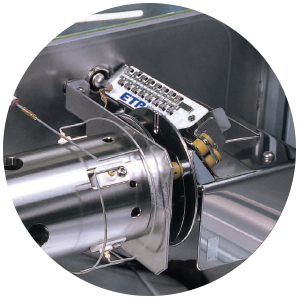01494 563377
Air Sampling
 Electron Multipliers for Mass Spectrometry
Electron Multipliers for Mass Spectrometry
An electron multiplier is used to detect the presence of ion signals emerging from the mass analyzer of a mass spectrometer. It is essentially the “eyes” of the instrument. The task of the electron multiplier is to detect every ion of the selected mass passed by the mass filter. How efficiently the electron multiplier carries out this taskrepresents a potentially limiting factor on the overall system sensitivity. Consequently, the performance of the electron multiplier can have a major influence on the overall performance of the mass spectrometer.
The basic physical process that allows an electron multiplier to operate is called secondary electron emission. When a charged particle (ion or electron) strikes a surface, it causes secondary electrons to be released from atoms in the surface layer. The number of secondary electrons released depends on the type of incident primary particle, its energy and characteristic of the incident surface
There are two basic forms of electron multipliers that are commonly used in mass spectrometry: the discrete-dynode electron multiplier and the continuous- dynode electron multiplier (often referred to as a channel electron multiplier or CEM). All ETP electron multipliers are of the discrete-dynode type.


